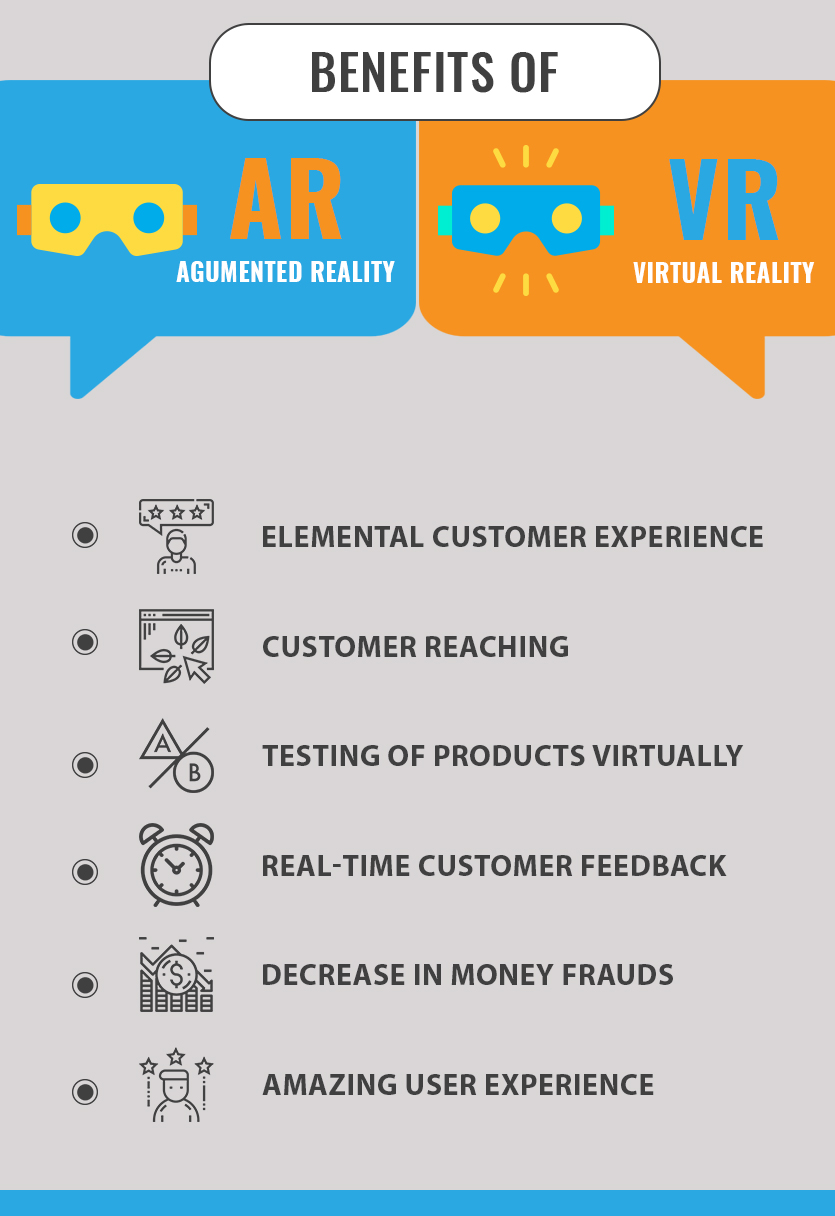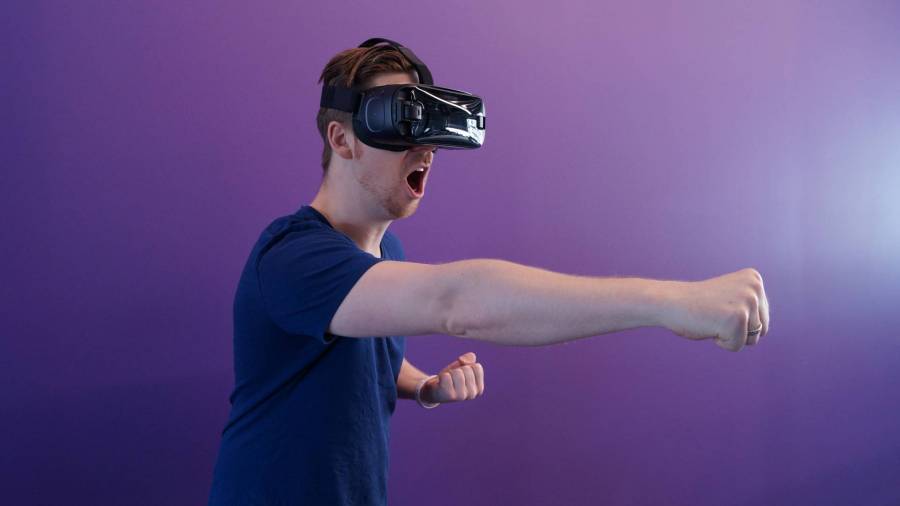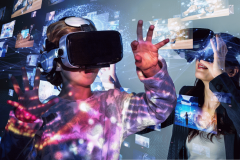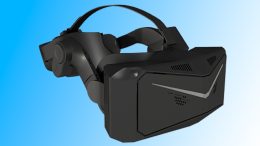Daily upgradations, as well as enhancements in particular technologies, are a regular thing right now. A technology that was something else yesterday can be upgraded to a hypothetical level overnight. The tech is in the vast field of Computer Science, including Augmented Reality and Virtual Reality. How will AR and VR enhance customer experience?
Augmented Reality (AR) and Virtual Reality (VR) mean that we experience something that isn’t there, but it feels like it is. This technology plays a vital role in experiencing things beforehand before we attain them in reality.
“Virtual Reality may be a technology that might truly permit you to attach on a true human level, soul to soul, in spite of wherever you are within the human world.” – Chris Milk.

Elemental Customer Experience
Let’s say you have a product concept or a tool that ensures one’s safety. It would be rather challenging to make a persuasive presentation of something that doesn’t exist or can be potentially dangerous. The Use Of VR is a perfect solution is these cases. Virtual worlds can show everything you want to.
Instead of a drawing or a 3D model of a building, you can let your customers explore it and feel the space. Your customer or client can try safety equipment without the risk of being injured. There always will be experiences that cannot or shouldn’t be reproduced in real life.
Virtual reality makes it possible to move beyond these limitations. Some products should be seen and experienced to appreciate its real value. Or the image of it can awake interest and enthusiasm the customer didn’t have before.
Think of such VR experiences as a test drive or a movie trailer — it brings the main idea, shows the possibilities, and encourages people to go further. Variety of applications is vast: virtual test drives, real estate tours, virtual fitting rooms, business class air travel, and so forth. The limit here is the imagination only.
Customer Reaching
In the era of the Internet, communication became far less personal. When a person writes to a chat, they expect a bot to answer. When the phone, they have to listen to a robot telling “press 1 if”. We all know the struggle of reaching a real person to ask your question.
Virtual reality can change it. Immersive technology allows the customer to have a face-to-face conversation with the agent. Today it is likely to be an avatar, but in the future, you may see the agent in the flesh.
The fact that your client can see the person they are talking to (or at least their avatar) makes communication much better, much more personal.
As a result, the customer feels more valued, appreciated, cherished. One of the problems that customer faces is to explain what the problem is. Remote troubleshooting is a complicated process where success depends on how well the client describes the problem and how good the agent is at understanding those descriptions.
Virtual reality can make this process much more comfortable. Because of its terrific visual possibilities, VR is a perfect tool to convey ideas through distance. In VR, both the customer and agent can see an object of discussion and manipulate it. The customer can watch, for example, a 360-Degree Video of device installation.
Participants can leave notes and comments attached to the device for future use. The view of the problem makes it’s solving more comfortable and more efficient. Instead of spending 10 minutes describing, one can show everything in just a second.
Testing of Products Virtually
When it comes to learning, practice is the key. VR can be used to improve customer service by enhancing agents’ training. New employees can polish their communication skills while facing multiple situations in a virtual world.
From ordinary everyday requests to the quite exceptional case, they can work on their way to handle the situation. If the company works with physical products, VR can be a place to learn them all.
A customer support agent should be knowledgeable about the products they will work with. VR allows exploring various products without actually having them.
Real-Time Customer Feedback and Utilization 0f a Product
Do you want to build a strong emotional bond with your customers? Do you want to wow them? Use VR. People are bored with the conventional ideas they get offered today. You need to offer something innovative, something exciting and thrilling, something like VR. As it is a relatively new technology, not many had a chance to try it.
Grant your customers new impressions, give them a chance to feel extraordinary emotions, let them have a unique VR experience. Happy customer — thriving business. Contributing to the customer experience is a must for every company that wants to stay on the market. And one of the best ways to do it is virtual reality.
AR is already creating inroads in coaching and client expertise. Holography is useful in training for virtual hands-on guidance to explain a process, complete a form, or orient a user. It also can simulate real-life scenarios such as emergency response, sales interactions, and so on.
Interfaces exploitation holographic computing complement ancient instruction with the accessorial spatial property. AR intensifications are inlaid for more considerable depth and selection in information presentation, such as floating text bubbles.
It provides details about a particular physical object, chronological procedure mapping for activity a task, or virtual arrows pointing to the correct button to push on a console. They provide numberless opportunities for adding additional digital data to nearly everything at intervals vary of a phone camera.
There is, as an associate example, less need to travel to a classroom if you can launch interactive, immersive 3D presentations on any desk, wall, or floor and “experience” them through the screen in your hand. Unlike passively watching videos, holographic interfaces add an extra experiential element to the training process.
As a result, users can more readily contextualize what they are learning. Customer experience applications are allowing consumers to use AR and holographic computing for self-selection, self-service, and self-help.
It is only a matter of time before they use it for even more. For example, AR App Like IKEA lets customers point their phones at their dining room to see how a new table will look in the space. Why not just point your phone at the shipping box to be holographically guided through the assembly process when it’s delivered?
One thing we do know for sure is that significant intellectual energy is being invested by companies of all types to capitalize on this emerging technology. The increased dispersal of AR experiences in all their various guises, combined with the mounting accessibility afforded by our smartphones, will drive mass-adoption and nurture affinity for the holographic interface.
A Decrease in Money Frauds
VR and AR support will save cash and increase internal collaboration – this can be very true for corporations with a world presence that face language barriers. An agent in North Yankee will cross-check a construction web site and take a VR exposure, making notes about potential issues and using generic labels to highlight problem areas.
Working in real-time and because all labels in a VR solution can be easily translated, an expert agent in Asia with no knowledge of English can understand precisely what the other agent views as problematic. Also, they will respond with their labels (uneven foundation, deficient load equalization, etc.) to assist the agent halfway across the globe.
This may seem futuristic, but it’s how companies will collaborate in the future because it saves time and outstanding details don’t get lost in translation. VR and AR will do wonders in the longer term by breaking down communication barriers, enabling agents around the world to help one another no matter the language they speak.
This technology might not be a staple of the client support business long, but expect to see it leveraged to create new and exciting ways to help customers more efficiently in the future.
Augmented reality (AR) and Virtual Reality (VR) has the potential to shake up the client’s expertise by individualizing retailers’ offers and sanctionative customers to check merchandise in numerous settings.
User Experience
By 2020, a hundred million shoppers can search in AR on-line and in-store, according to Gartner, Inc.
Virtual reality and increased reality can impact client support as a result of they produce ways to assist customers that don’t exist nowadays. Not only can agents get up to speed faster on new topics with the technology, but it can be deployed to customers so they can create better and more informative issue requests.
It made no sense some time ago, but the way it has brought out itself is extravagant.
“A 2018 Gartner survey indicated that, by 2020, 46% of shops planned to deploy either AR or VR solutions to fulfill client service expertise necessities.
Additionally, the technologies behind these solutions have moved 15 to 30 percent further along the Gartner Hype Cycle over the past 12 months.”
The number gives us a clear vision of how the future of Augmented Reality will be.
Conclusion
Bringing it to an end, the only question remains will the AR and VR experience of products in the open market take over the current scenario entirely? Or will the phase reviews and on sight analyzing remain persistent.











